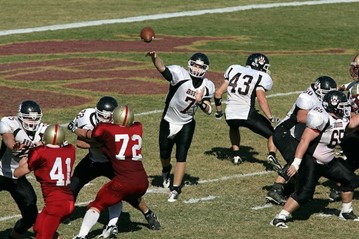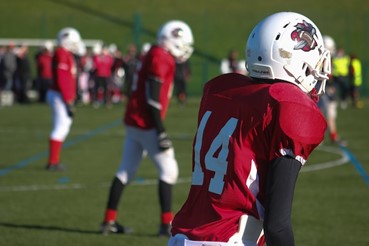Youth football is a beloved sport that instills discipline, teamwork, and a love for physical activity in young athletes. However, as with any contact sport, there are inherent risks, and one of the most significant concerns is the potential for concussions.
Addressing concussion awareness and prevention in youth football is not just a matter of safety, but a crucial responsibility for coaches, parents, and administrators alike. In this article, Cort Dennison, Football Coach explores strategies to raise concussion awareness, recognize symptoms, and establish protocols that prioritize player safety in youth football.
Understanding Concussions
A concussion is a traumatic brain injury caused by a blow, jolt, or impact to the head or body that results in rapid movement of the brain within the skull. While concussions are typically considered mild, they can have serious consequences if not managed properly.
Education for Coaches, Parents, and Players
All stakeholders in youth football should receive comprehensive education on concussions. This includes understanding what a concussion is, how it occurs, and the potential consequences if not treated promptly.
Recognizing the Signs and Symptoms
Coaches and parents should familiarize themselves with common signs of a concussion, which may include dizziness, confusion, nausea, sensitivity to light or noise, and changes in behavior. If any of these symptoms are observed, immediate action should be taken.
Prevention Strategies
Proper Technique and Fundamentals
Coaches should prioritize teaching correct techniques for tackling, blocking, and other football-related skills. Proper form reduces the risk of high-impact collisions that can lead to concussions.
Appropriate Equipment and Fitting
Ensuring players have well-maintained, properly fitting helmets and protective gear is essential. Regular equipment checks and adjustments can significantly reduce the risk of head injuries.

Strength and Conditioning Programs
Implementing strength and conditioning programs that focus on neck and core strength can help stabilize the head and reduce the risk of concussions.
Limiting Contact in Practice
Coaches should be mindful of the amount of contact during practices. Implementing drills that emphasize skill development without full-speed tackling can reduce unnecessary risk.
Establishing Safety Protocols
Immediate Removal from Play
If a concussion is suspected, the player should be immediately removed from the game or practice. They should not return until cleared by a medical professional.
Medical Evaluation and Clearance
A player who has sustained a concussion should undergo a thorough medical evaluation, including neurological testing. They should only return to play when they receive clearance from a healthcare provider with expertise in concussion management.
Graduated Return to Play Protocol
Once cleared, players should follow a structured, step-by-step return-to-play protocol. This gradual progression ensures they are symptom-free and physically ready to resume full participation.
Encouraging Open Communication
Creating an environment where players feel comfortable reporting symptoms and concerns is crucial. Players should understand that their health and safety are paramount, and they should never hesitate to speak up about potential head injuries.
Conclusion
Concussion awareness and prevention in youth football are fundamental to creating a safe and nurturing environment for young athletes. By prioritizing education, implementing preventive measures, and establishing clear protocols, we can significantly reduce the risk of concussions and safeguard the well-being of our young players. Together, we can ensure that youth football remains a positive and enriching experience for all involved.
